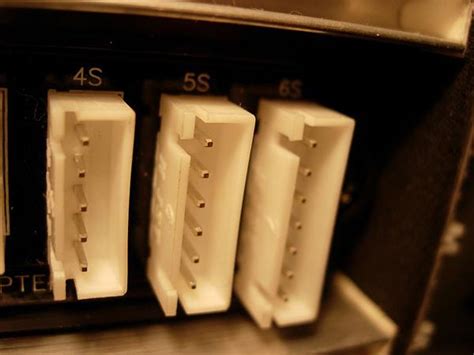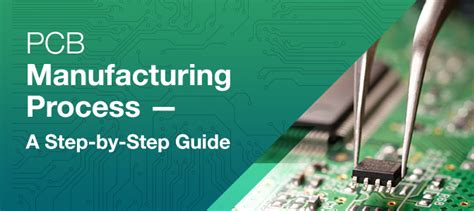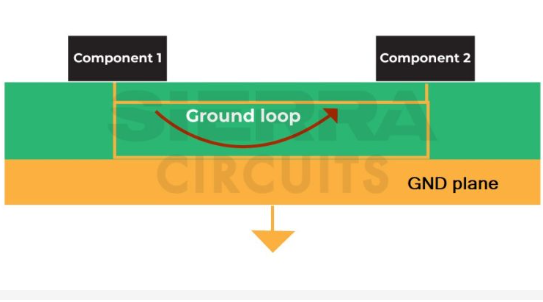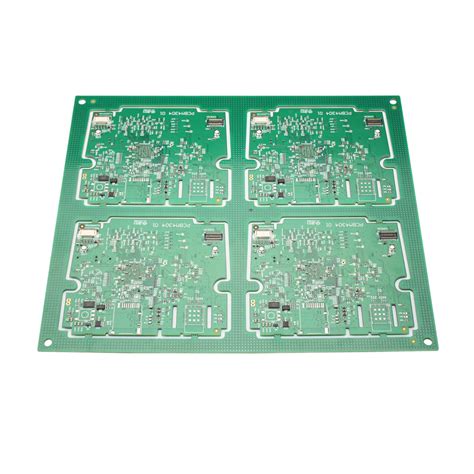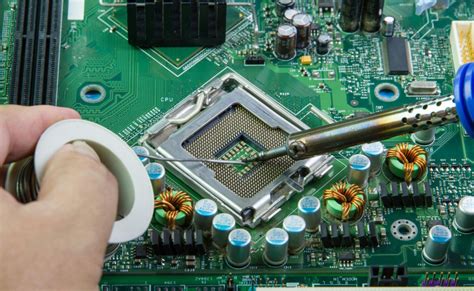Durable JST Connector Solutions for PCB Mounting

Key Takeaways
When integrating JST connectors into your PCB manufacturing workflow, focus on durability and compliance to ensure long-term reliability. Key considerations include strain relief mechanisms that protect solder joints from mechanical stress and robust locking devices that prevent accidental disconnections in demanding environments. For PCB manufacturing companies, selecting DIN-compliant connectors simplifies compatibility with standardized systems, reducing redesign risks and PCB manufacturing cost.
Tip: Always verify the connector’s current rating and pin spacing against your PCB layout to avoid mismatches during assembly.
Managing PCB manufacturing business costs involves balancing connector quality with project budgets—opt for connectors that offer both high-cycle durability and ease of installation. Partnering with experienced PCB manufacturing companies like Andwin PCB ensures access to connectors tested for thermal stability and vibration resistance, critical for industrial applications. Lastly, prioritize designs with clear polarity markings and tool-free locking features to streamline maintenance and reduce downtime.
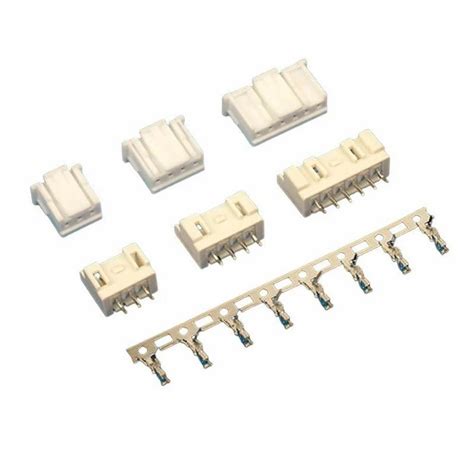
Introduction to JST Connectors in PCB Design
When designing printed circuit boards (PCBs), selecting the right connectors is critical to ensuring long-term reliability and performance. JST connectors are widely favored in PCB manufacturing for their compact design, durability, and ease of integration. These connectors provide secure electrical connections while minimizing space requirements—a key advantage for PCB manufacturing companies aiming to optimize board layouts. Their standardized pin configurations simplify assembly processes, reducing PCB manufacturing cost by streamlining production workflows.
A standout feature of JST connectors is their ability to withstand mechanical stress, thanks to built-in strain relief mechanisms. These components prevent wire displacement during vibration or movement, which is essential in applications like automotive systems or industrial equipment. Additionally, robust locking devices ensure connectors remain firmly mated, even in demanding environments. This reliability directly impacts the PCB manufacturing business, as it reduces field failures and maintenance costs over the product lifecycle.
Compliance with DIN standards further enhances their appeal, ensuring compatibility across global markets. Whether you’re prototyping or scaling production, choosing DIN-compliant JST connectors guarantees interoperability with other standardized components. For PCB manufacturing companies, this alignment with international norms simplifies sourcing and reduces design iterations, ultimately lowering PCB manufacturing cost while accelerating time-to-market.
By prioritizing JST connectors in your designs, you not only enhance PCB durability but also align with industry best practices that balance performance and cost-efficiency. Their versatility makes them suitable for everything from consumer electronics to high-reliability industrial systems, reinforcing their role as a cornerstone of modern PCB manufacturing.
Key Features of Durable JST Connectors for Secure Mounting
When selecting JST connectors for your PCB manufacturing projects, durability and secure mounting are critical to ensuring long-term reliability. These connectors are engineered with strain relief mechanisms that absorb mechanical stress, preventing wire fatigue and protecting solder joints from damage during assembly or field use. This feature is particularly valuable for PCB manufacturing companies aiming to reduce failure rates in high-vibration environments.
Robust locking devices further enhance stability by securing the connector housing to the PCB, minimizing the risk of accidental disconnections. Whether using push-pull, lever-actuated, or screw-type locks, these mechanisms ensure consistent electrical contact even under harsh conditions. For applications requiring compliance with industry standards, DIN-certified JST connectors provide interoperability with other components, simplifying integration and reducing PCB manufacturing cost through streamlined design processes.
Another advantage lies in their compact footprint, which optimizes space utilization on densely populated boards. This design efficiency supports PCB manufacturing business goals by enabling smaller form factors without compromising performance. Additionally, polarized housings and color-coded terminals reduce installation errors, saving time during assembly.
When sourcing connectors, prioritize models with gold-plated contacts for corrosion resistance and low insertion loss, especially in high-frequency or humid environments. Pairing these features with proper soldering techniques ensures a secure mechanical bond and reliable signal transmission. By focusing on these attributes, you can achieve durable PCB-mounted connections that meet both performance demands and cost-efficiency targets.
Understanding Strain Relief Mechanisms in PCB-Mounted JST Connectors
When integrating JST connectors into your PCB manufacturing workflow, understanding strain relief mechanisms is critical for ensuring long-term reliability. These mechanisms are designed to absorb mechanical stress caused by vibrations, bending, or pulling forces that could otherwise compromise electrical connections. For PCB manufacturing companies, selecting connectors with robust strain relief not only reduces the risk of solder joint fractures but also minimizes maintenance costs over the product’s lifecycle.
Modern JST connectors often feature overmolded strain relief sleeves or flexible cable clamps that distribute mechanical loads away from sensitive solder points. For example, connectors with DIN-compliant designs incorporate reinforced housing geometries to prevent cable displacement, a feature particularly valuable in industrial environments. When evaluating PCB manufacturing cost, prioritize connectors with integrated strain relief, as they reduce the need for secondary support components like adhesive anchors or cable ties.
Here’s a comparison of common strain relief types used in JST connectors:
| Type | Mechanism | Key Benefit |
|---|---|---|
| Overmolded Sleeve | Rubber or thermoplastic molding | Even stress distribution, vibration resistance |
| Flexible Tab | Spring-loaded retention clip | Easy assembly, reusable design |
| Cable Clamp | Screw or snap-in fixation | High pull-out resistance, industrial use |
For PCB manufacturing businesses, balancing durability and ease of integration is essential. Strain relief mechanisms must align with your board’s layout constraints—avoid designs that require excessive space or complicate automated assembly. Additionally, connectors with locking devices complement strain relief by preventing accidental disconnections, further enhancing field performance. By prioritizing DIN standards, you ensure compatibility with third-party components, streamlining procurement and reducing PCB manufacturing cost through scalable sourcing.
Always validate strain relief performance under real-world conditions, such as repeated flexing or temperature cycling, to avoid premature failures. This proactive approach safeguards your design’s integrity while aligning with the operational demands of modern PCB manufacturing.
Importance of Locking Devices for Reliable Field Performance
When integrating JST connectors into your PCB design, locking devices play a critical role in maintaining stable electrical connections, especially in environments prone to vibration, shock, or accidental tugging. These mechanisms ensure that connectors remain securely mated to the PCB, preventing intermittent signals or disconnections that could compromise system functionality. For PCB manufacturing companies, selecting connectors with robust locking features directly impacts the reliability of the final product, reducing long-term maintenance costs and downtime.
High-quality locking mechanisms, such as push-pull tabs or screw-lock systems, provide strain relief by distributing mechanical stress away from solder joints. This is particularly vital in applications where repeated plugging/unplugging occurs or where the PCB assembly faces physical movement. By minimizing stress on solder points, you safeguard against cracks or fractures that could lead to costly rework—a key consideration for managing PCB manufacturing cost. Additionally, connectors compliant with DIN standards offer standardized locking interfaces, ensuring compatibility across systems and simplifying integration for PCB manufacturing business workflows.
In demanding industrial or automotive settings, where environmental factors like temperature fluctuations or moisture are common, a secure lock prevents accidental disengagement. This durability not only extends the lifespan of the PCB assembly but also aligns with the reliability expectations of end-users. When sourcing components, prioritize connectors that balance ease of installation with fail-safe retention—factors that influence both performance and scalability in PCB manufacturing. By addressing these elements early in the design phase, you mitigate risks associated with field failures, ensuring your product meets stringent quality benchmarks.
DIN-Compliant JST Connectors: Standards and Compatibility
When selecting JST connectors for PCB manufacturing, adherence to DIN standards ensures compatibility and reliability across applications. DIN-compliant connectors, such as those meeting DIN 41612 or DIN 41640 specifications, provide a uniform framework for mechanical and electrical performance. This standardization simplifies integration into designs, especially when collaborating with PCB manufacturing companies that prioritize interoperability. By aligning with DIN guidelines, these connectors guarantee consistent pin spacing, housing dimensions, and current ratings—critical factors for minimizing errors during assembly and reducing long-term PCB manufacturing costs.
The robust locking mechanisms and strain relief features in DIN-compliant JST connectors enhance durability, even in high-vibration environments. For instance, connectors with integrated latches or screw-lock systems prevent accidental disconnections, a common concern in industrial or automotive settings. This reliability is vital for PCB manufacturing businesses aiming to deliver products with extended service life. Additionally, DIN standards often specify materials and testing protocols, ensuring connectors withstand temperature fluctuations, humidity, and mechanical stress—key for maintaining performance in harsh field conditions.
When evaluating compatibility, consider how DIN compliance aligns with your PCB’s layout requirements. For example, connectors designed for surface-mount technology (SMT) or through-hole mounting must match your board’s design rules to avoid rework. DIN standards also define mating heights and footprint tolerances, which help streamline the assembly process. By choosing DIN-compliant JST connectors, you reduce the risk of mismatched components, which can escalate PCB manufacturing costs and delay timelines.
Finally, verify that your chosen connector meets both DIN and industry-specific certifications, such as UL or IEC. This dual compliance ensures seamless integration into global supply chains, a priority for PCB manufacturing companies serving diverse markets. Whether you’re designing consumer electronics or industrial control systems, DIN-compliant JST connectors offer a balance of durability, standardization, and cost efficiency—essential for optimizing your PCB manufacturing business outcomes.
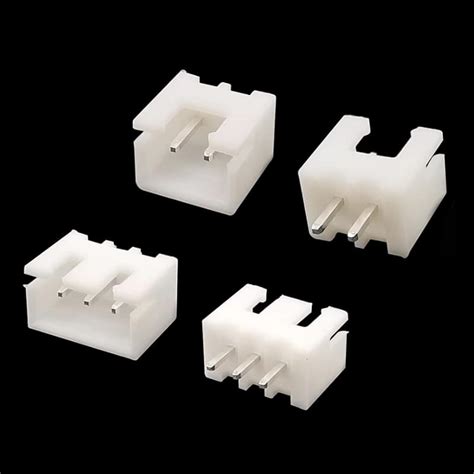
Selecting the Right JST Connector Type for PCB Applications
When choosing JST connectors for your PCB manufacturing projects, start by evaluating the specific requirements of your application. Consider factors like pitch size, current rating, and environmental conditions to ensure compatibility with your board’s design. For instance, compact connectors with a 2.5mm pitch are ideal for space-constrained layouts, while higher-current variants (e.g., 5A–10A) suit power-intensive circuits. Partnering with experienced PCB manufacturing companies ensures access to connectors that align with your technical specifications and production workflows.
Durability is critical in PCB manufacturing business operations, so prioritize connectors featuring strain relief and robust locking mechanisms. Strain relief minimizes stress on solder joints during assembly or field use, reducing failure risks in high-vibration environments. Locking systems, such as push-pull latches or screw-in designs, prevent accidental disconnections, which is vital for applications requiring long-term reliability. DIN-compliant JST connectors add another layer of assurance, as they meet standardized dimensions and performance criteria, simplifying integration across systems.
Balancing PCB manufacturing cost with quality is equally important. While lower-cost connectors may seem appealing, they often lack the mechanical resilience needed for industrial or automotive applications. Instead, opt for connectors that offer corrosion-resistant contacts and high-temperature tolerance to extend the product lifecycle. For example, gold-plated terminals enhance conductivity and resist oxidation, even in humid conditions.
Finally, verify compatibility with your assembly processes. Surface-mount (SMT) and through-hole (THT) connectors have distinct footprints, affecting both layout design and assembly efficiency. Collaborating with suppliers early in the design phase helps avoid costly revisions and ensures seamless scalability for mass production. By aligning connector selection with both technical and economic priorities, you can optimize performance without compromising on reliability or budget.
Best Practices for Integrating JST Connectors into PCB Layouts
When integrating JST connectors into your PCB manufacturing process, start by ensuring precise alignment between the connector footprint and the PCB layout. Verify that the pad dimensions, spacing, and hole sizes match the connector’s datasheet specifications to avoid misalignment during assembly. Consistent footprint accuracy reduces errors in automated soldering processes, which is critical for maintaining low PCB manufacturing cost and minimizing rework.
Prioritize strain relief mechanisms, such as reinforced solder joints or mechanical anchors, to protect connections from mechanical stress. This is especially important in applications exposed to vibration or frequent plugging/unplugging. Pairing robust locking mechanisms with proper board mounting holes ensures connectors remain securely attached, even in harsh environments. For DIN-compliant JST connectors, adhere to standardized spacing and orientation to guarantee compatibility with industry equipment and simplify integration.
Collaborate closely with PCB manufacturing companies to optimize material selection and layer stack-up for connector stability. For instance, using thicker copper layers or additional ground planes near high-current connectors can enhance durability. During prototyping, test the connector’s fit and solderability under real-world conditions to identify potential issues early.
Avoid overcrowding connectors near board edges or other components, as this complicates assembly and increases the risk of damage during handling. Instead, allocate sufficient clearance for mating and unmating cycles. Label pinouts clearly on the silkscreen to assist technicians during installation, reducing errors that could escalate PCB manufacturing business overhead.
Finally, validate the entire assembly through stress testing, including thermal cycling and pull tests, to confirm long-term reliability. By aligning design choices with both functional requirements and PCB manufacturing constraints, you can achieve seamless integration of JST connectors while balancing performance and cost efficiency.
Avoiding Common Pitfalls in JST Connector Installation and Maintenance
When integrating JST connectors into your PCB manufacturing workflow, avoiding installation and maintenance errors is critical to ensuring long-term reliability. One common mistake is improper alignment during mating. Always verify the correct orientation of the connector pins relative to the PCB pads to prevent bent terminals or poor electrical contact. Overlooking strain relief mechanisms can also lead to premature failure, especially in applications exposed to vibrations or mechanical stress. Ensure strain relief clips or cable ties are securely fastened to distribute tension away from solder joints.
Another pitfall involves inadequate soldering techniques. Using excessive heat or insufficient solder can weaken connections, impacting PCB manufacturing cost due to rework or field failures. Follow the manufacturer’s thermal profile recommendations and inspect solder joints for uniformity. Additionally, neglecting locking devices compromises field performance. Confirm that connectors are fully seated and audibly “click” into place, as incomplete engagement risks disconnection during operation.
When collaborating with PCB manufacturing companies, ensure their design files account for connector footprints and clearance requirements. Misaligned holes or incorrect pad sizes can delay prototyping and increase PCB manufacturing business expenses. For DIN-compliant connectors, validate compatibility with industry standards to avoid interoperability issues. Finally, regular maintenance checks—such as inspecting for oxidation or debris—help sustain performance. Use contact cleaners approved for high-temperature environments to preserve conductivity without damaging housing materials. By addressing these nuances, you’ll minimize downtime and maximize the durability of your PCB-mounted JST solutions.
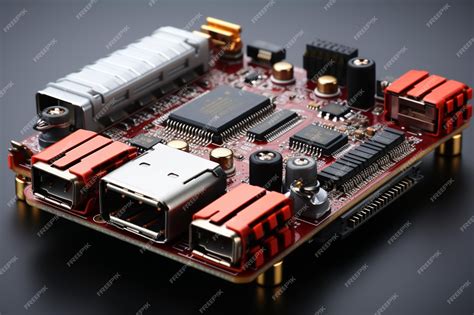
Conclusion
When selecting JST connectors for PCB mounting, durability and reliability are non-negotiable for ensuring long-term performance in demanding applications. By prioritizing connectors with strain relief mechanisms and robust locking devices, you safeguard against mechanical stress and accidental disconnections, which are common pain points in field deployments. DIN-compliant designs further simplify integration, ensuring compatibility with industry standards and reducing risks during assembly. For PCB manufacturing companies, these features translate to lower PCB manufacturing costs over time, as fewer failures mean reduced maintenance and replacement expenses.
To optimize your PCB manufacturing business, consider how connector choices impact both design flexibility and production efficiency. For example, selecting connectors with pre-engineered mounting footprints minimizes layout adjustments, while standardized pin configurations streamline testing processes. Always verify that JST connectors align with your PCB’s thermal and electrical requirements, especially in high-vibration or high-temperature environments. By avoiding shortcuts in connector selection, you ensure that your PCB manufacturing workflows remain scalable and cost-effective without compromising on quality.
Finally, collaborate closely with suppliers who understand the nuances of PCB manufacturing cost drivers, such as material choices and assembly complexity. A well-chosen JST connector not only enhances the reliability of your design but also reinforces your reputation for delivering durable, field-ready solutions.
FAQs
What makes JST connectors suitable for PCB mounting?
JST connectors are designed with features like strain relief and robust locking mechanisms to ensure secure attachment to PCBs. Their compact design and compliance with DIN standards make them ideal for applications requiring reliable field performance. These connectors are widely used in PCB manufacturing due to their durability and ease of integration into various circuit layouts.
How do strain relief mechanisms enhance durability in PCB-mounted connectors?
Strain relief prevents mechanical stress from damaging solder joints or wires by redistributing tension away from critical connection points. This is especially important in PCB manufacturing companies that prioritize long-term reliability, as it minimizes failures caused by vibration or repetitive motion in industrial environments.
Why are locking mechanisms critical for reliable field performance?
Locking mechanisms ensure connectors remain securely mated, even under harsh conditions. This reduces the risk of disconnections due to shock or vibration, a key consideration for PCB manufacturing cost optimization by avoiding downtime or repairs.
How does DIN compliance impact connector compatibility?
DIN-compliant JST connectors adhere to standardized dimensions and electrical specifications, ensuring interoperability with other components. This simplifies design processes for PCB manufacturing businesses, as compatibility risks are minimized during assembly.
What factors should you consider when selecting JST connectors for PCB applications?
Evaluate the connector’s current rating, pin count, and environmental resistance. Partnering with experienced PCB manufacturing companies ensures alignment with your project’s mechanical and electrical requirements while balancing PCB manufacturing cost constraints.
Ready to Streamline Your PCB Assembly?
For tailored solutions in PCB manufacturing, explore our expertise in integrating durable JST connectors into your designs. Click here to learn how we optimize performance and cost efficiency for your projects.

